-> 2023 17-25 Nov Week6-7
Walk cycle
3 concepts define a good foundation for a walk:
- Key poses: In a walk, these would be your contact poses.
- Breakdowns: The passing position between your key poses.
- Extremes: These are the highest and lowest points of the walk.
Tips: Having the cycle walk in space rather than in place will help show the character pushing itself forward and falling onto each step.
For walker’s assignment, will allow us to focus on the hips and legs of the walk so we can better understand the hierarchy between them.
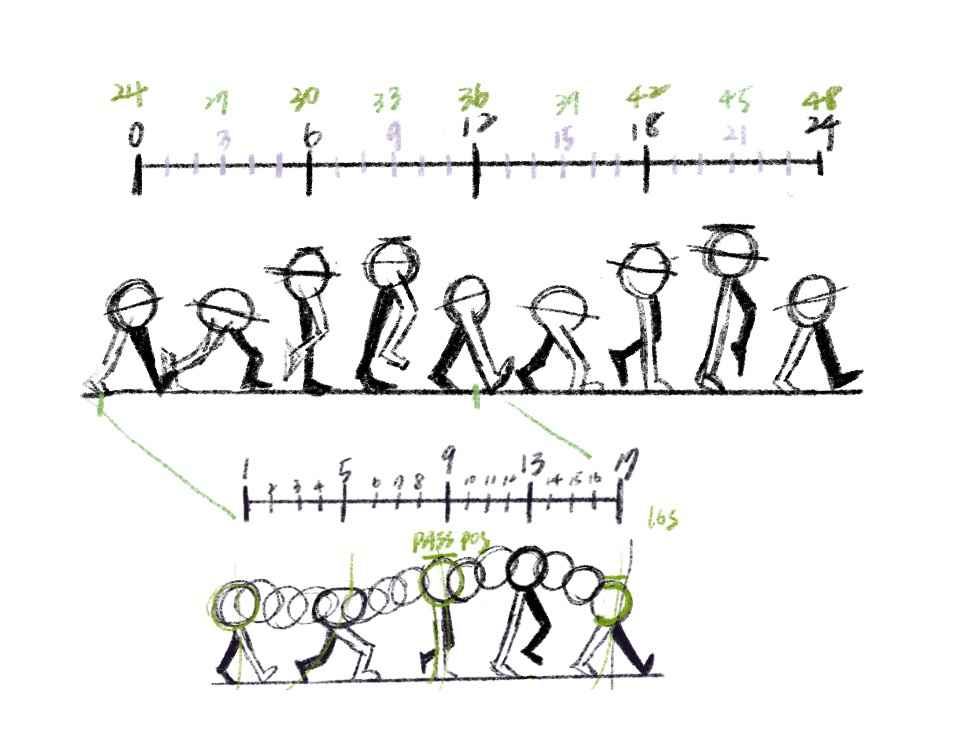
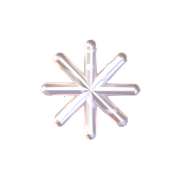
->2023 06-10 Nov. Week5
Weight Shift
In this practice, I learned how the body moving will connect to each other parts at the same time. The idea of ‘follow through’ and ‘hierarchy’ of each movement in a walk cycle.
Spline
Weight Shift Blocking
Weight Shifting Planning
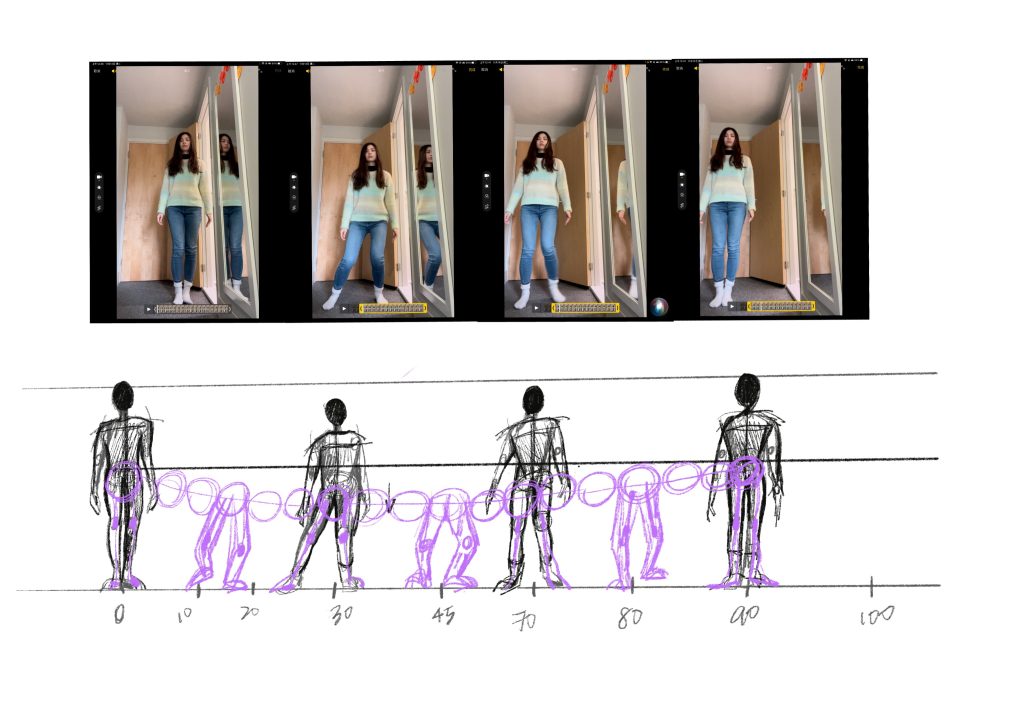
As for the practice of making a pose and examining the timing through planning at first. In this case, I drew the ball as the core weight of a character at first and then expanded to another part of the body like arms and legs.
It is about the timing behind the animation, thorugh the planning, it is vital to know when to up and down for the weight so that other parts can follow through.

-> 2023 20 Nov.
Study note – ASK 102-163

- For walk action, we lean forward with our upper bodies and throw out a leg just in time to catch ourselves. Step. Catch. Step. Catch…
- All walks are different. No two people in the world walk the same.
About getting the weight shift:

- We don’t get weight by a smooth level of movement.
- We need to increase the ups and the downs – accentuate or exaggerate the ups and downs.
Other notes from the book
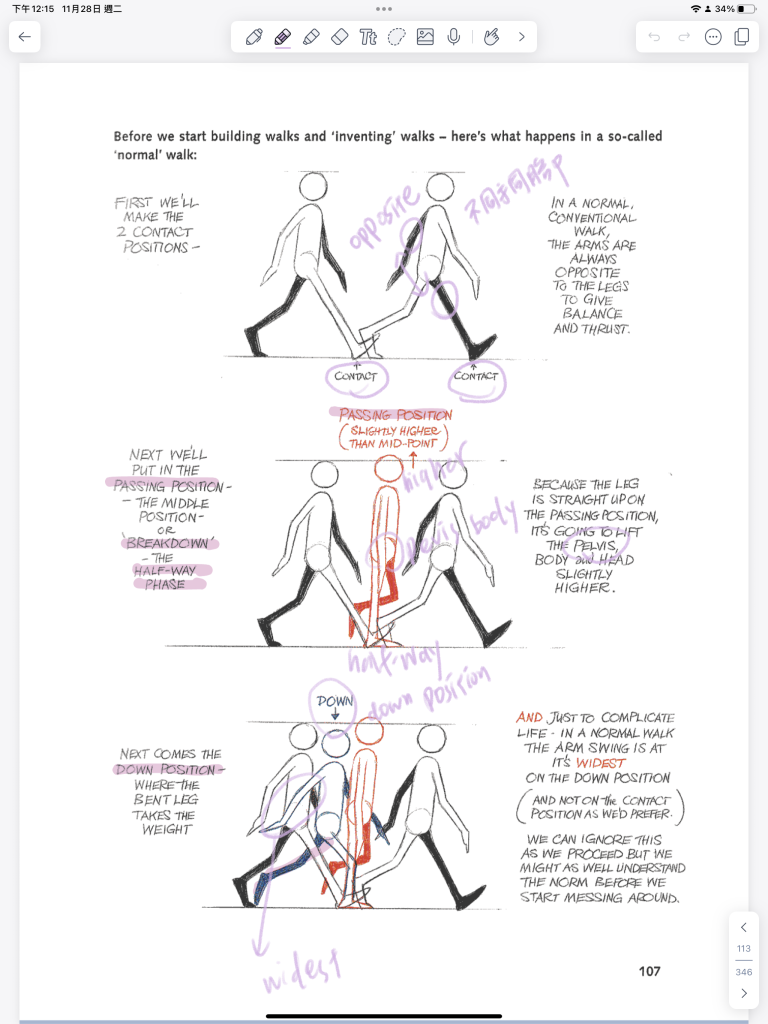
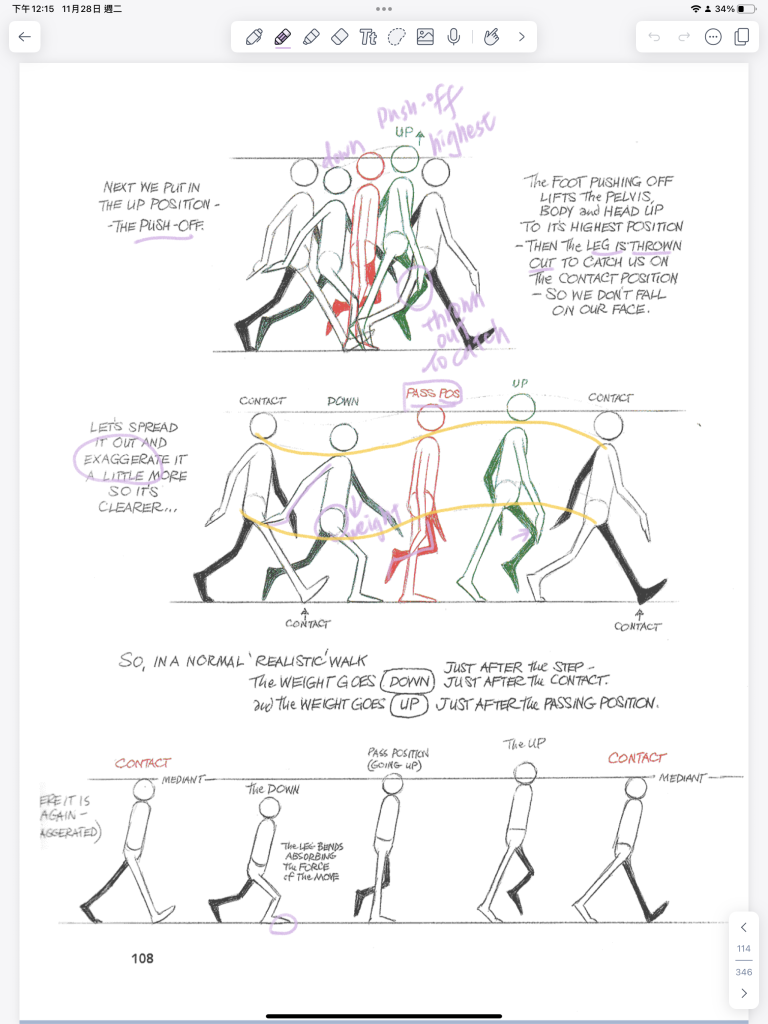
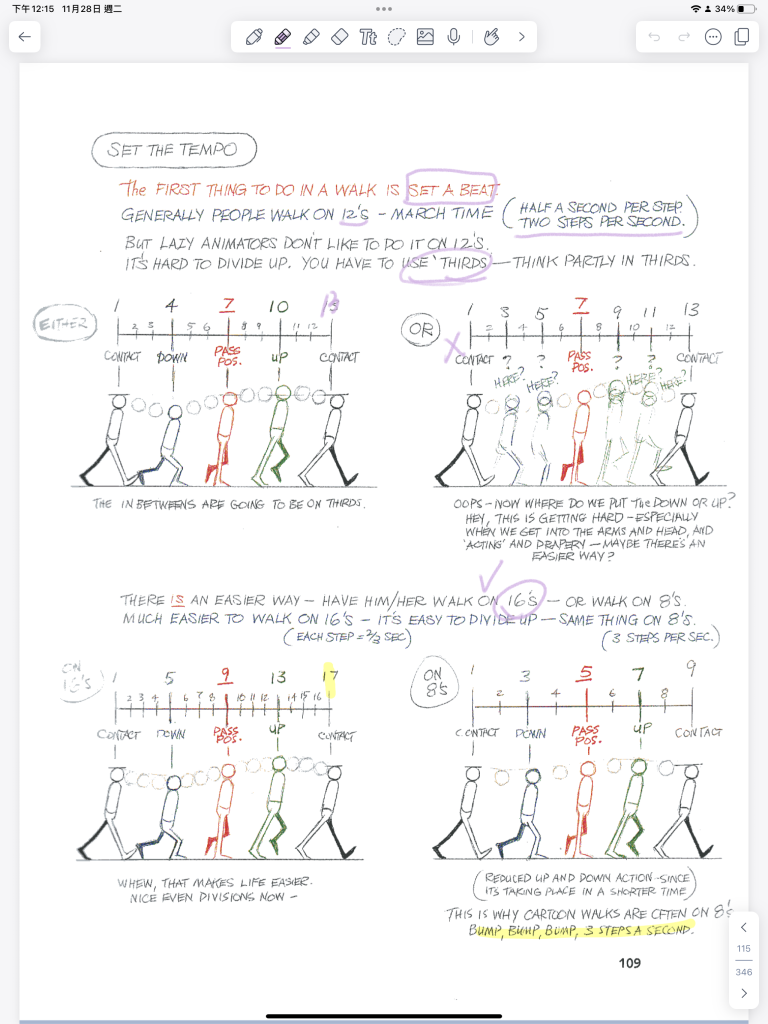
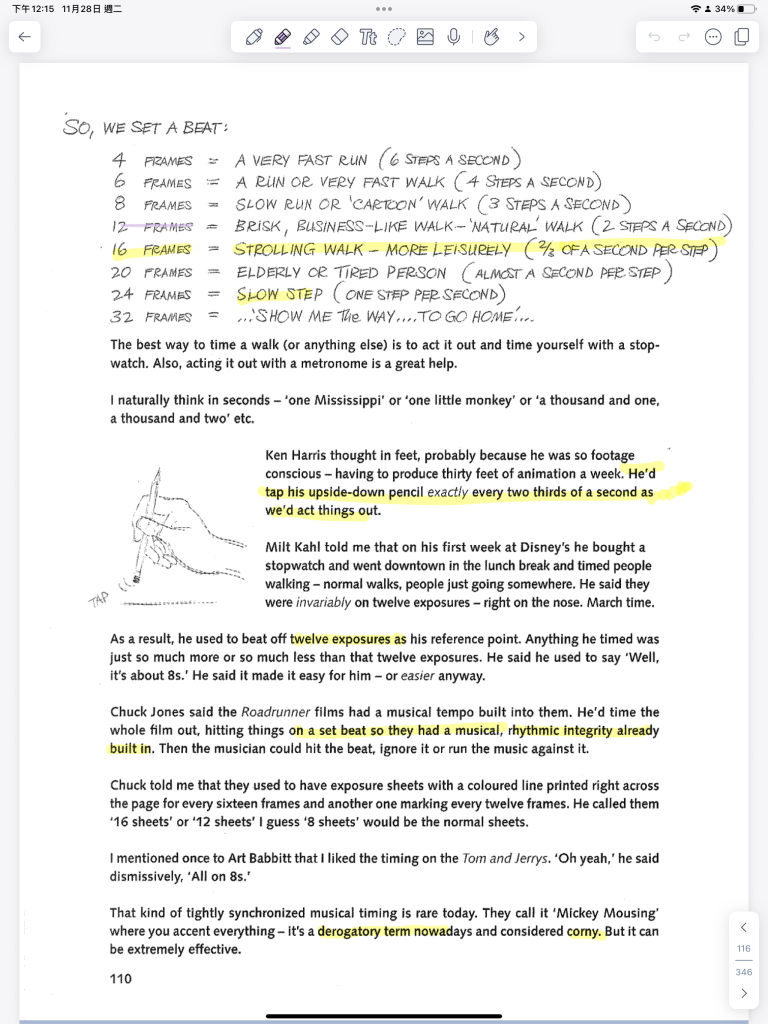
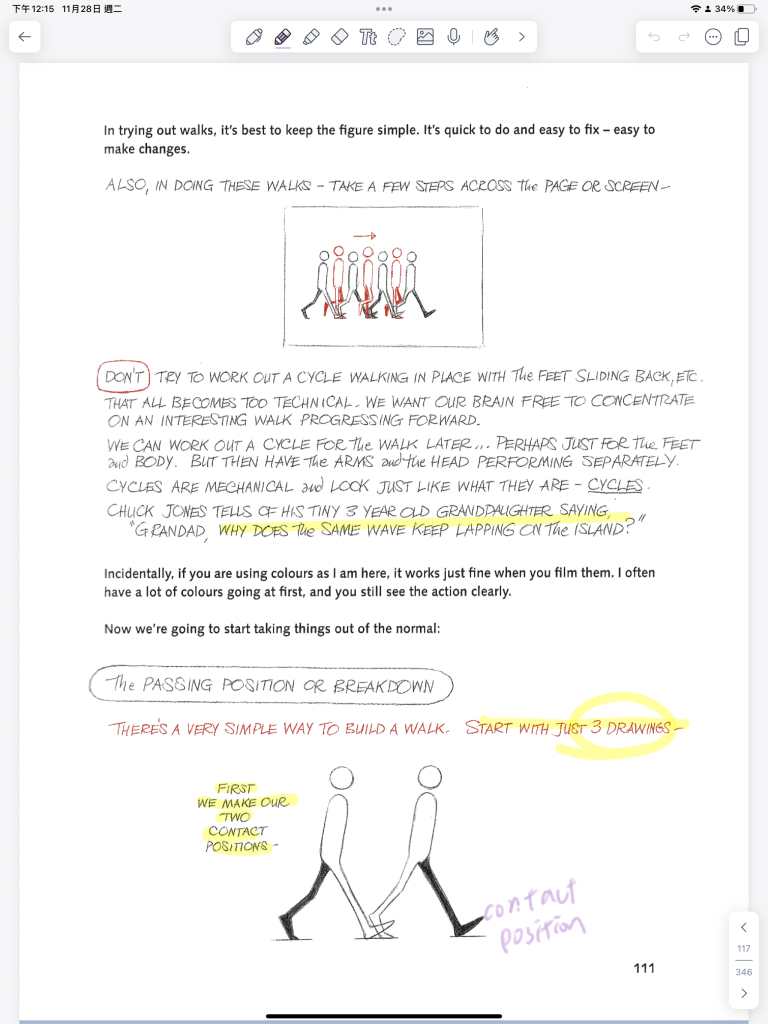
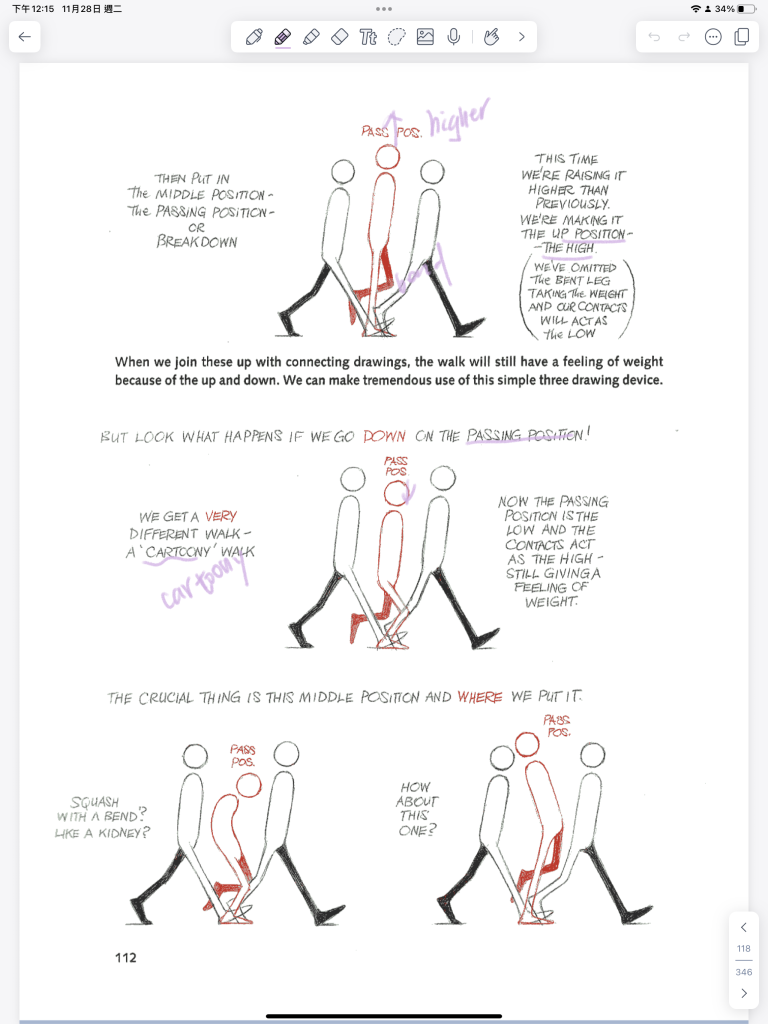
Pose Drawing
In this case, we practice making the pose more dynamic by drawing a line through the middle of the pose and observing the curve of the line.
Tips: There is the same amount of positive space on each side then your pose is balanced.
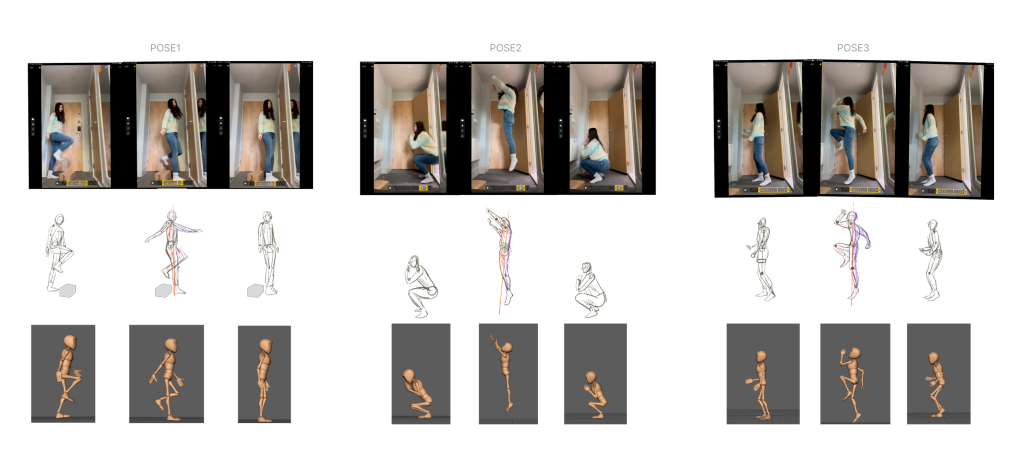
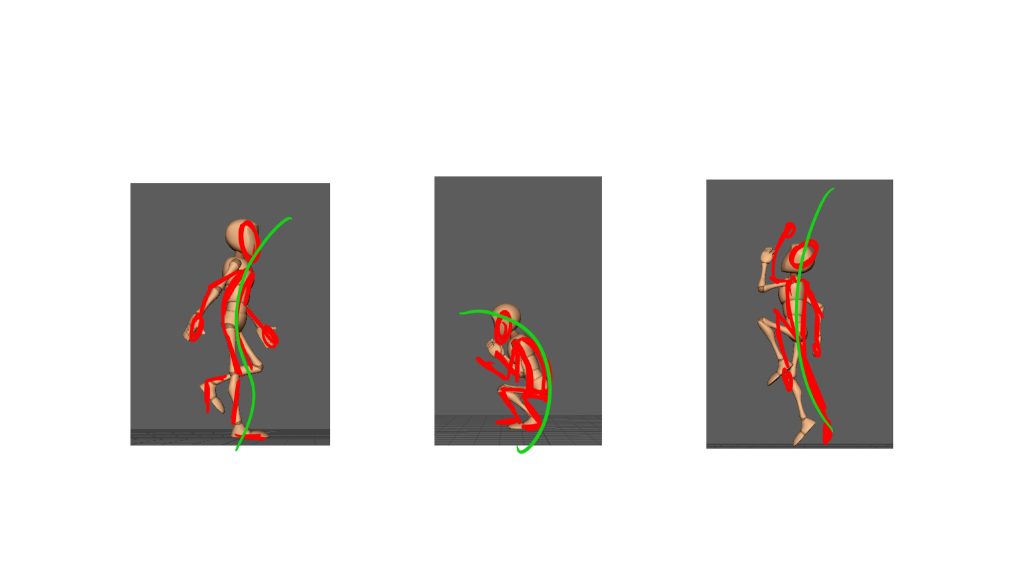
Through this study, I learn how to observe the body movements by the assistant of drawing curves on the body. It is a good method to help the animator understand whether the gesture is exaggerated or not easy to tell the dynamic of characters.

->2023 02-09 Nov.
Ball with tail
This week, we aim to work on a ball with a tail. This practice combined multiple skills like follow-through, overlapping, and anticipation.
First, we start from observing of video in which a squirrel jumps to catch up with the idea of how tails swag during the movement.
Then, we worked on blocking animation to build a basic keyframe of jumping based on our planning sketch. I guess it’s a fundamental practice for pose-to-pose in further animation.
Lastly, we finished our spline animation which seemed as the most difficult part for me. Here are some notes from teacher gave me when I adjusted my animation in MAYA.
- Watch the curve of the position of the character. ( Turn on the motion trail and make sure the path of movement is a perfect curve!! )
- Following through a little bit at the end of the movement would make it more natural.
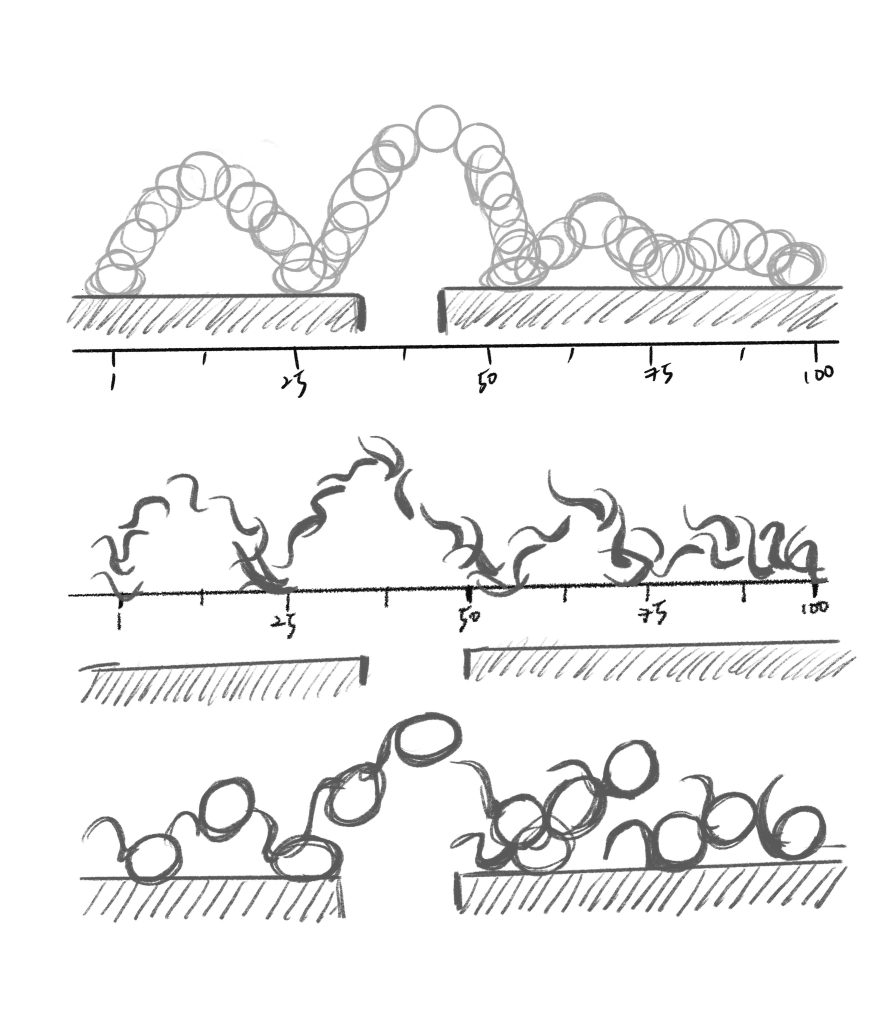
https://syncsketch.com/sketch/NGRkMjAyNGI0/?offlineMode=1#/21668355/22463351/f_0 ( Whole process of assignment every week )
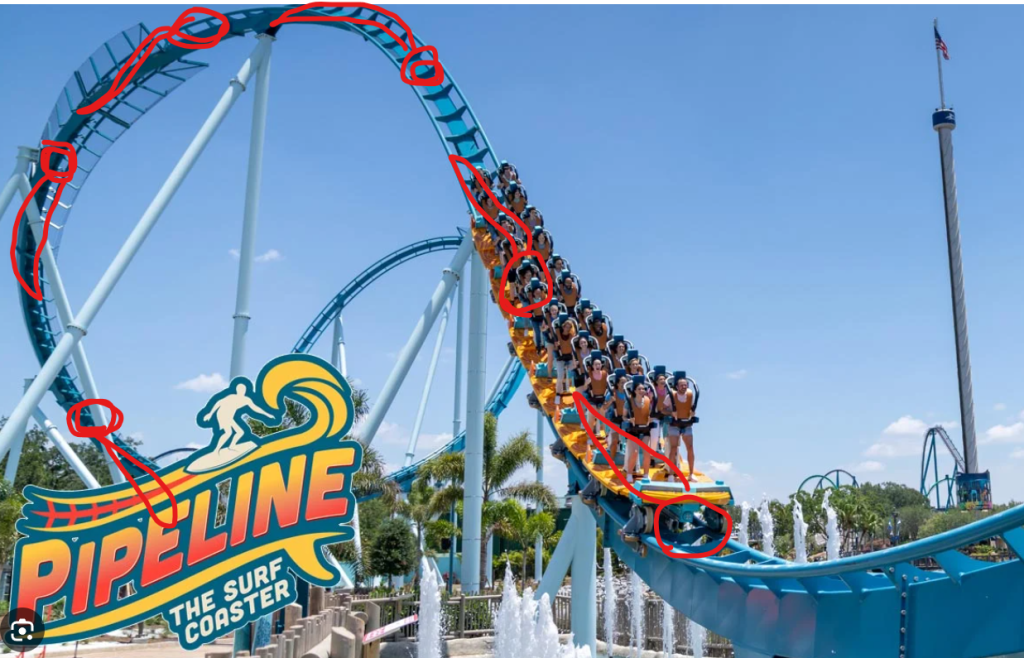
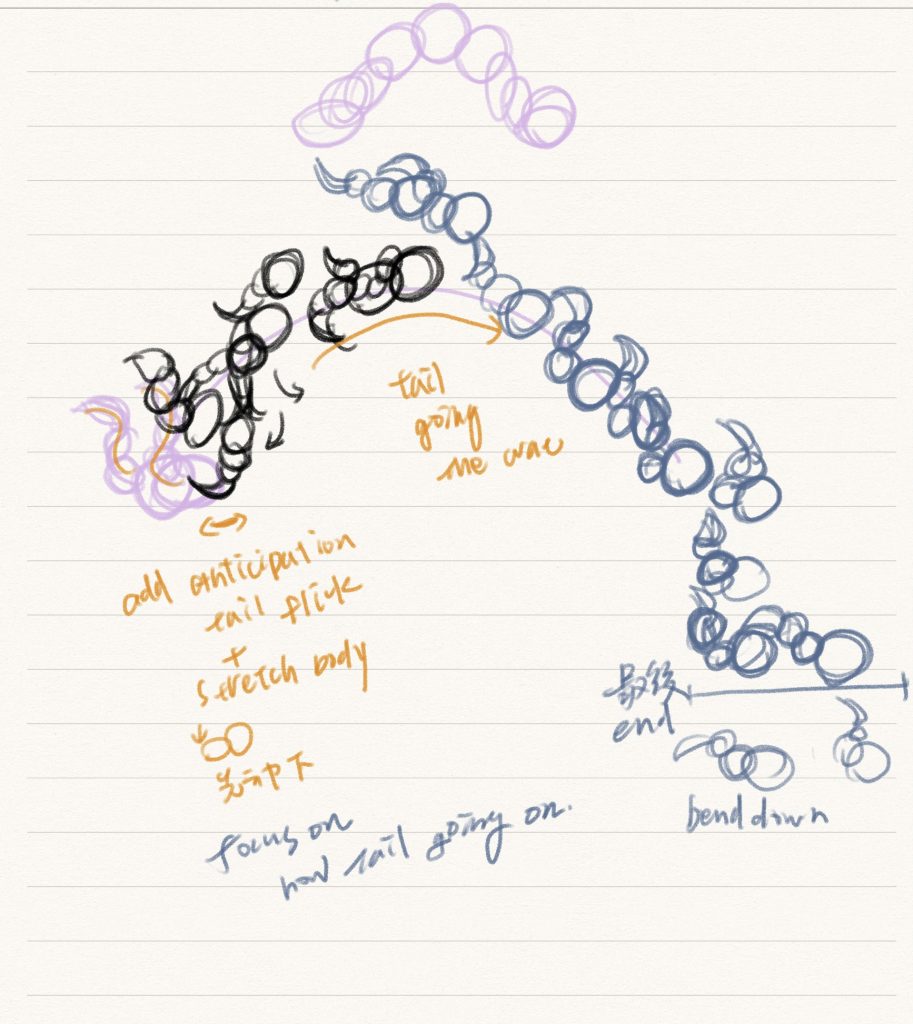
In today’s feedback, the tutor gave me an instruction on how the tail will move by a picture of a roller coaster. It is obvious from observing things in daily life that I need to spend time with. In this case, there is not just one ball bouncing, it has many parts to move at the same time. It is vital to plan at first and see every part of the body is a ball moving together.